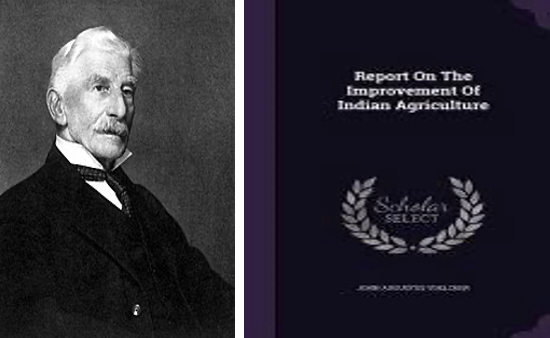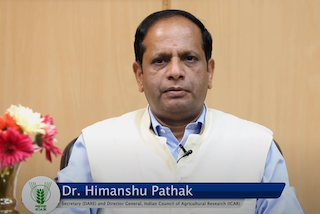📜 Historical Development
Historical Development in USA and India, Timeline for major events in agriculture.
Select the wrong combinations out of these?
Historical Development of Extension
USA
- To stop the migration of rural people to cities President Roosevelt established County Commission in
1862. - To keep rural people in rural areas “Out of school education” should be given to them, for this Philadelphia Committee was signed.
- Land Grant Colleges came into existence as a part of
Morill Act 1862. The act was passed under the presidency of Abraham Lincon. JRF 2011/2014 - Experimental stations came into existence as a part of
Hatch Act 1887. - Seed corn trains were organised in Lowa in 1904 by Prof. Holden.
- Extension service in USA is K/W
Cooperative extension servicewhich came as a consequence ofSmith Liver Act 1914. It is a branch of the land-grant institution. JRF 2011/2017 - Cooperative extension service of USA is composed of
Federal services& basic unit for extension service isstate. - In 1885, the
concept of demonstrationwas given byDr. Seeman A. Knapp. He generated a new variety and demonstrated on one million acre farm in Lausannia. Therefore he is known asFather of Method Demonstration. Farm demonstration work started in 1903 under Dr. Seaman A. Knapp.
India
👉🏻 Important Chronological Events in Agriculture
Famine Commission Report 1866
Department of Revenue, Agriculture and Commerce (DRAC) was set in 1871:
Famine commission 1866 recommended establishment of Agriculture department in 1871 in the tenure of Lord Mayo.
The Famine Commission 1880
Recommended revival of Dept. of Agriculture (DOA) under the control of secretary (1881) and all provinces to have ‘DOA’ (1882).
1891:
- 📜 Dr. J.A. Volcker’s report on Improvement of Indian Agriculture
- Foundation for Agriculture Research laid by
Dr. J.A. Voelcker. - With the establishment of Imperial Biological Laboratory in 1889.

1892:
Agriculture chemist & assistant chemist appointed to look after research & teaching.
The Famine Commission 1901
- Recommended the appointment of experts capable of applying scientific methods to the improvement of agriculture.
- Setting up of Imperial Agricultural Research Institute at
Pusa, Biharin1905was established. - First Irrigation Commission 1901
1901-05:
- Six agricultural colleges were setup (
Pune,Nagpur,Kanpur,Sabour,Coimbator&Lyallpur).
The Government of India Act 1919
- Empowered the transfer of all the departments closely connected with rural development to the major provinces and agriculture become the
state subject.
The Royal Commission on Agriculture in India 1928
- It paved the way for development of Extension in India.
- Visual demonstration to motivate farmers in farmer’s field & appointment of Director of agriculture etc.
Extension Education Institutes (EEIs)
- To cater extension education and training needs of the large number of extension professionals in the country, four Extension Education Institutes (EEIs) were established in India at the regional level. These were:
Nilokheriin Haryana (1959): [Haryana Institute of Rural Development, HIRD]Anandin Gujarat (1962)Hyderabadin Andhra Pradesh (1962)Jorhatin Assam (1987)
Objectives of creating EEI
- To provide in-service training to the staff of the State/Regional Training Centers in extension and communication methodology.
- To organize workshops on training methods / communication techniques for master trainers.
- To conduct training programmes in specialized fields like monitoring and evaluation.
- Supervision and extension management for middle level extension functionaries.
- To conduct subject matter and extension education training programmes.
Extension Role of Agricultural Universities:
- The University Education Commission (1949), headed by Dr S. Radhakrishnan, recommended the establishment of ‘
Rural Universities’ in India. - Endorsing this idea, the two joint Indo-American Teams on Agricultural Research and Education (1954-55 and 1959-60) recommended the setting up of Agricultural Universities in the States on the pattern of Land Grant Colleges of the United States of America.
- Accordingly first Agricultural University came into existence at
Pantnagar, Uttaranchal State (Erstwhile Uttar Pradesh), in1960. On the basis of American pattern of Land Grant College. - The role of Agricultural University is presented following the Report of the Review Committee of Agricultural University headed by
Dr. M.S. Randhawa(1978):Teaching,ResearchandExtension. - Dr. Ralph W. Cummings prepared blue print for establishment of Agricultural Universities in different states of India.
- 104 National institutes & 64 SAUs are in India.
- Central Agricultural University is at
Manipur. - First extension teaching at the under graduate level was started by College of Agriculture,
Calcutta Universityin 1950. - First Post Graduate teaching started by
College of Agriculture, Sabour, Biharin 1955. - First Ph.D. programme was introduced by
IARIin 1961. - The role of extension education in India is performed by State Agricultural Universities.
Indian Agricultural Research Institute (IARI)
| 1905 | Agricultural Research Institute was established at Pusa, Bihar under the viceroyalty of Lord Curzon. Earlier it was in West Bengal. With the help of sum of rupees 9 lakh was donated by an American Philip Foundation of USA. |
|---|---|
| 1911 | Renamed as Imperial Agricultural Research Institute |
| 1923 | Institute start offering Diploma of Associate ship |
| 1934 | Major earth quake damaged the building at Pusa, Bihar |
| 1936 | Shifted to Pusa Road, New Delhi |
| 1936 | B. Vishwanath, first Indian Director of Institute |
| 1946 | The Diploma of Associate ship was recognised equivalent to M.Sc. |
| 1947 | Name was changed from Imperial to Indian |
| 1958 | Recognised as “Deemed University” under UGC Act 1956. PG school was established. |
Indian Council of Agricultural Research (ICAR)
- ICAR is
registered cooperativenot an educational organisation or research institute. - Union Minister of Agriculture is the ex-officio
Presidentof the ICAR Society. - Director General (DG) of ICAR is also
Secretary of DARE. - 1st President of ICAR:
Sir Mohammad Habibullah - First Vice-president of ICAR: Vijay Raghavacharya
- First secretary of ICAR: Mr. S.A. Hydari
- First Agricultural minister of India:
Rajendra Prashad - Current President of ICAR:
Narendra Singh Tomar - Current DG of ICAR:
Dr Himanshu Pathak
- Directorate of Extension Education was established in
1966. - ICAR Division of Extension was established in
1971. - First All India Coordinated Research Project in Extension Education sanctioned on A Study on Farming System in 1977.
- There are
8 scientific divisionsat ICAR - HQ
New Delhi. - It is the largest network of agricultural research and education institutes in the world.
History
| 1926 | Established Royal Commission on Agriculture, headed by Lord Linlithgow recommended setting up Imperial Council of Agricultural Research to promote, guide and coordinate agricultural research throughout the India. |
| 1928 | Royal Commission on Agriculture submitted its report |
| 16th July, 1929 | Imperial Council of Agricultural Research was set up as registered society under the Societies Registration Act 1860. On the recommendation of RCA AFO 2017 |
| March, 1946 | Under the president ship of Jogendra Singh it was decided to change the ‘Imperial’ into ‘Indian’ and now it is called Indian Council of Agricultural Research. |
| 1963 | The Agricultural Review Team headed by Dr. Marion W. Parker of USDA was appointed. |
| 1965 | 1st DG of ICAR was Dr. Benjamin Peary Pal (BP Pal), he initiated All India Co-ordinated Research Projects (AICRPs). |
| 1966 | ICAR was made a fully autonomous organisation on the recommendation of Agricultural Review Committee. Placement of different agricultural research institutes under the preview of ICAR. |
| June, 1972 | Gajendragadkar Committee was established to review the recruitment and personal policies of ICAR and its institutes, which submitted its report in 1973. |
| 1973 | Department of Agricultural Research and Education (DARE) was created in the Ministry of Agriculture. Agricultural Scientist Recruitment Board (ASRB) was established on 1 November 1973 as an independent recruitment agency in pursuance of the recommendations of the Gajendra Gadkar Committee. |
| 1975 | The Agricultural Research Services (ARS) was architect by Dr M.S. Swaminathan. |
MANDATE
- Plan, Undertake, Coordinate and Promote Research and Technology Development for Sustainable Agriculture.
- Aid, Impart and Coordinate Agricultural Education to enable Quality Human Resource Development.
- Frontline Extension for technology application, adoption, knowledge management and capacity development for agri-based rural development.
- Policy, Cooperation and Consultancy in Agricultural Research, Education & Extension.
ICAR Publications
- Indian Journal of Agricultural Sciences (Monthly)
- Indian Journal of Animal Sciences (Monthly)
- Indian Farming (
Monthly) - Indian Horticulture (Quarterly)
- ICAR Reporter (Quarterly)
- APIS (Quarterly)
Periodicals (Hindi)
- Kheti
- Phal Phool
- Krishi Chayanika
ICAR Mobile Applications
- Kisan Suvidha
- Pusa Krishi
- MKisan Application
- Shetkari Masik Android App
- Farm-o-pedia
- Bhuvan Hailstorm App
- Crop Insurance Mobile App
- AgriMarket
- Application for Poultry
- Pashu Poshan
National Academy of Agricultural Research and Management (NAARM)
Hyderabadin1976.- The new recruits & serving staffs in agricultural research management get trained at NAARM.
National Institute of Agricultural Extension Management (MANAGE)
Hyderabadin1986- To provide managerial and technical skills.
National Institute of Agricultural Marketing (NIAM)
Jaipur
Select the wrong combinations out of these?
Historical Development of Extension
USA
- To stop the migration of rural people to cities President Roosevelt established County Commission in
1862. - To keep rural people in rural areas “Out of school education” should be given to them, for this Philadelphia Committee was signed.
- Land Grant Colleges came into existence as a part of
Morill Act 1862. The act was passed under the presidency of Abraham Lincon. JRF 2011/2014 - Experimental stations came into existence as a part of
Hatch Act 1887. - Seed corn trains were organised in Lowa in 1904 by Prof. Holden.
- Extension service in USA is K/W
Cooperative extension servicewhich came as a consequence ofSmith Liver Act 1914. It is a branch of the land-grant institution. JRF 2011/2017 - Cooperative …
Become Successful With AgriDots
Learn the essential skills for getting a seat in the Exam with
🦄 You are a pro member!
Only use this page if purchasing a gift or enterprise account
Plan
- Unlimited access to PRO courses
- Quizzes with hand-picked meme prizes
- Invite to private Discord chat
- Free Sticker emailed
Lifetime
- All PRO-tier benefits
- Single payment, lifetime access
- 4,200 bonus xp points
- Next Level
T-shirt shipped worldwide

Yo! You just found a 20% discount using 👉 EASTEREGG

High-quality fitted cotton shirt produced by Next Level Apparel